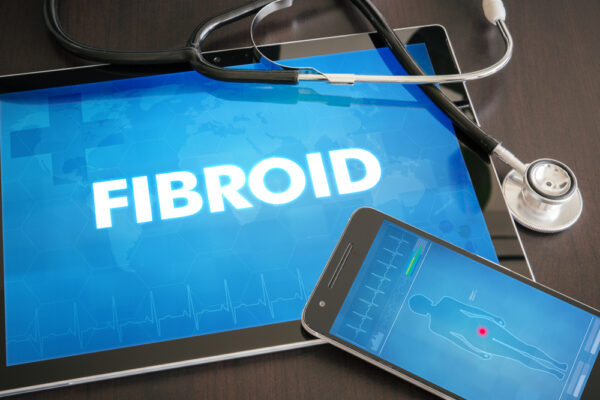- Pakwellness
- 0 Comments
Women’s health is a complex and intricate sphere that encompasses a range of unique challenges and enterprises. From the onset of puberty through the stages of majority and into menopause, colorful gynecological issues can arise, impacting both physical well- being and overall quality of life. Understanding these common gynecological problems and their results is essential for maintaining optimal reproductive health and overall well- being. In this composition, we claw into some current gynecological issues and the approaches taken to address them effectively.
1. Menstrual Irregularities
Irregular ages, heavy bleeding( menorrhagia), or painful ages( dysmenorrhea) are common gynecological issues. These irregularities can be caused by hormonal imbalances, life factors, or underpinning medical conditions. results frequently involve a combination of approaches, including life changes similar as maintaining a healthy weight, managing stress, and staying physically active. Hormonal curatives, similar as birth control capsules or intrauterine bias( IUDs), can help regulate menstrual cycles and manage symptoms. In some cases, surgical interventions might be considered to address severe or patient issues.

2. Urinary Tract Infections( UTIs)
Urinary tract infections( UTIs) are characterized by symptoms like frequent urination, a burning sensation while urinating, and discomfort in the lower tummy. They’re caused by bacterial infections in the urinary system. results for UTIs generally involve a course of antibiotics specified by a healthcare provider. preventative measures, similar as staying doused , urinating after sexual exertion, and maintaining proper hygiene, can help reduce the threat of UTIs.

3. Polycystic Ovary Pattern( PCOS)
PCOS is a hormonal complaint characterized by irregular ages, hormonal imbalances, weight gain, and occasionally difficulty conceiving. life changes play a pivotal part in managing PCOS, including espousing a balanced diet, regular exercise, and stress operation. Hormonal treatments, similar as oral contraceptives or insulin- sensitizing specifics, can help regulate hormones and palliate symptoms. For those seeking to conceive, supported reproductive technologies similar as in vitro fertilization( IVF) might be considered.

4. Endometriosis
Endometriosis is a habitual condition where towel analogous to the filling of the uterus grows outside the uterus, leading to pelvic pain, painful ages, and discomfort during intercourse. Treatment options for endometriosis range from pain operation through specifics to hormonal curatives that suppress the growth of endometrial towel. In severe cases, surgery may be recommended to remove or reduce the towel growth.

5. Fibroids
Uterine fibroids are noncancerous growths that develop in the uterus and can beget heavy menstrual bleeding, pain, and pressure. operation approaches depend on the size and position of the fibroids, as well as the inflexibility of symptoms. Options may include monitoring, pain operation through specifics, hormonal treatments, or surgical procedures to remove or shrink the fibroids.

6. Vaginal Infections
Vaginal infections, similar as incentive infections and bacterial vaginosis, affect from microbial imbalances. These infections can beget discomfort, itching, and abnormal discharge. Treatment involves antifungal or antibiotic specifics, frequently available over-the-counter or specified by a healthcare provider. Maintaining proper hygiene and avoiding annoyances are also essential to precluding rush.

7. Menopause Symptoms
Menopause marks the end of reproductive times and brings about a range of symptoms, including hot flashes, night sweats, mood changes, and vaginal blankness. Hormone remedy, either estrogen alone or a combination of estrogen and progesterone, can help palliate menopausal symptoms. life adaptations, similar as maintaining a healthy diet, staying physically active, and rehearsing stress reduction ways, can also contribute to managing symptoms effectively.

8. Pelvic seditious complaint( PID)
Pelvic seditious complaint( PID) is an infection of the reproductive organs, frequently caused by sexually transmitted infections( STIs). PID can lead to pelvic pain and discomfort. Prompt treatment with antibiotics is pivotal to help complications similar as gravidity and habitual pelvic pain.

9. Ovarian Excrescencies
Ovarian excrescencies are fluid- filled sacs that can develop on the ovaries. utmost excrescencies are inoffensive and resolve on their own, but larger or patient excrescencies might beget pain or discomfort. Monitoring and operation depend on factors similar as size and symptoms. Treatment options range from observation to hormonal curatives. Surgical junking might be necessary if the excrescencies are large, causing pain, or affecting fertility.

10. Contraception Challenges
Choosing the right birth control system can be a challenge, as some styles might lead to side goods or complications. It’s important to consult a healthcare provider to explore contraception options that align with individual health requirements and preferences. Open communication with a provider ensures that the chosen system effectively prevents unwanted gravidity without compromising overall health.

Conclusion:
Nurturing Gynecological Well-being
Navigating the geography of women’s health involves understanding and addressing a variety of gynecological issues that can impact individualities at different stages of life. By feting these common challenges and the results available, women can take visionary way to prioritize their reproductive health and overall well- being. Whether it’s managing menstrual irregularities, seeking treatment for conditions like endometriosis or fibroids, or making informed choices about contraception, knowledge is the first step toward commission.
It’s important to flash back that gynecological health isn’t a one- size- fits- all trip. Each person’s gests , enterprises, and medical requirements are unique. Seeking professional guidance from gynecologists and healthcare providers is pivotal for accurate opinion, substantiated treatment plans, and ongoing support.
